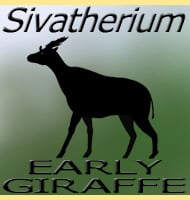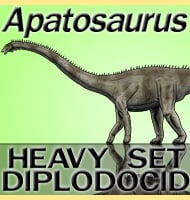In Depth
Another Asian tyrannosaur that was named early in 2016, Timurlengia has been named from isolated fossil remains cantered around a braincase that was first discovered in 2004. The braincase lay in storage at the Zoological Institute of the Russian Academy of Sciences until 2014 when Stephen Brusatte, a palaeontologist noted for his work with predatory dinosaurs, realised that the braincase represented a distinct and undiscovered genus. In 2016, Brusatte and colleagues published a paper naming the new dinosaur, Timurlengia. Timurlengia is named in memory of Timurleng, the founder of the short lived Timurid Empire which split up shortly after his death in 1405.
Timurlengia is so far known from only fragmentary remains that suggest a size of about three to four meters long for this dinosaur. However, these remains are also from a sub adult, meaning that fully grown adults would have at least been a little bit larger than this estimate. Still, Timurlengia would have been a hunter of smaller to medium sized dinosaurs, and likely had long the leg proportions that are commonly seen in smaller tyrannosaurs (though leg length has been proven to proportionately shorten with age in larger tyrannosaur genera).
An additional interesting fact about Timurlengia is that there has been enough of the braincase preserved to reveal the construction of the ear structure, studies of which have revealed two things about this dinosaur. One is that the inner ear is arranged in such a way that Timurlengia had a heightened sense of balance, strongly indicating that Timurlengia was a very agile predator. The second is that the cochlea is proportionately very long, allowing Timurlengia to hear very low frequency sounds, possibly below what we could hear ourselves. It is uncertain how this could have been an advantage in hunting, but it may have equally allowed for inter species communication between, such as low frequency growls to be heard between two or more Timurlengia.
Timurlengia has been credited with showing that medium sized tyrannosaurs were present in the early portions of the late Cretaceous, with some researchers saying that the genus is proof that the tyrannosaurs did not achieve truly large sizes until the final twenty million years or so of the Cretaceous. However it must be remembered that other tyrannosaur genera such as Yutyrannus lived even earlier than Timurlengia, and fossil evidence indicates that they also grew bigger as well. If anything, what Timurlengia proves is that as the tyrannosaurs became the dominant predators in Laurasia, they diversified upon a genus by genus basis. This would mean lightly built medium sized (four to eight meters long) tyrannosaurs like Timurlengia and Alioramus that hunted more agile prey types, and the larger (nine meters and more) heavier genera like Tarbosaurus that relied more upon brute force for taking down prey.
Further Reading
- New tyrannosaur from the mid-Cretaceous of Uzbekistan clarifies evolution of giant body sizes and advanced senses in tyrant dinosaurs. - Proceedings of the National Academy of Sciences of the United States of America. - Stephen L. Brusatte, Alexander Averianov, Hans-Dieter Sues, Amy Muir & Ian B. Butler - 2016.










